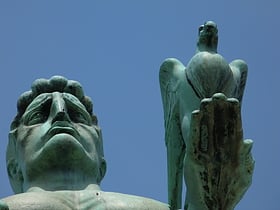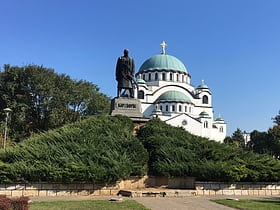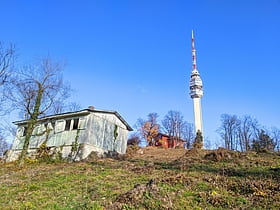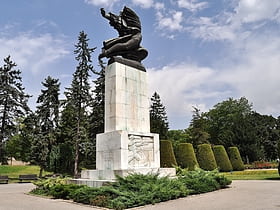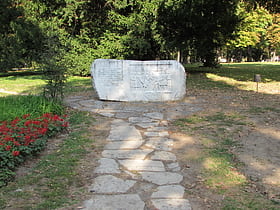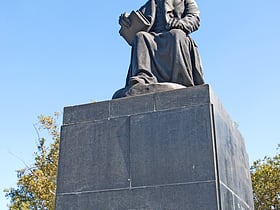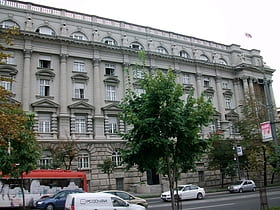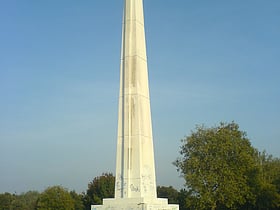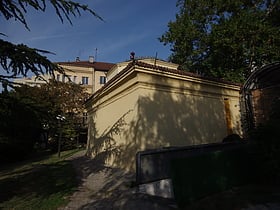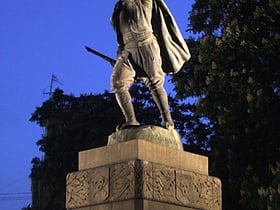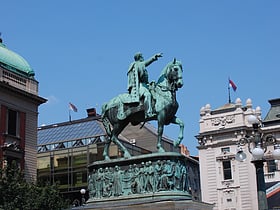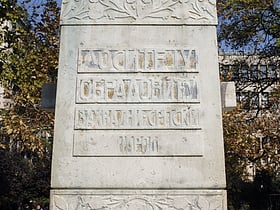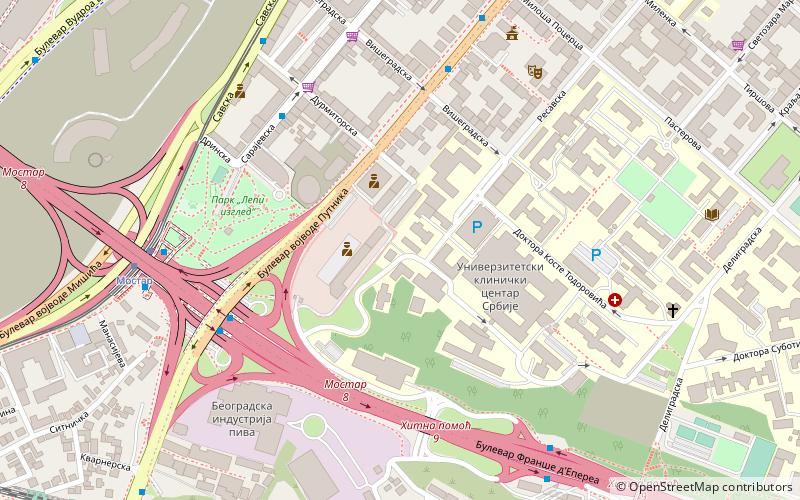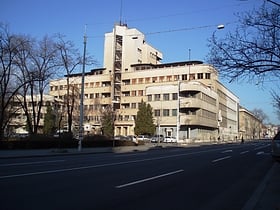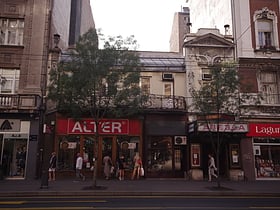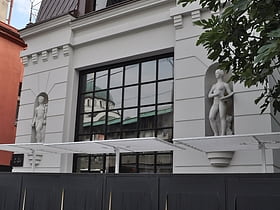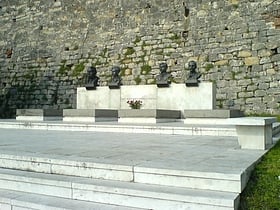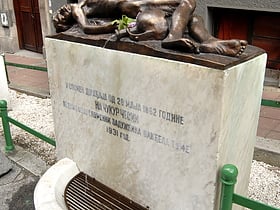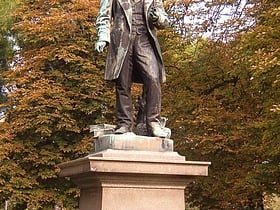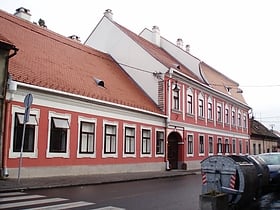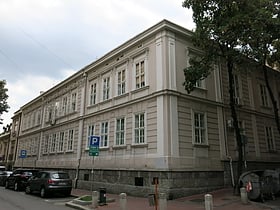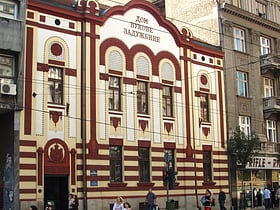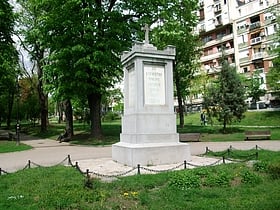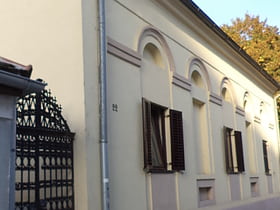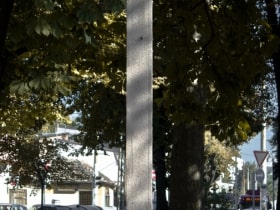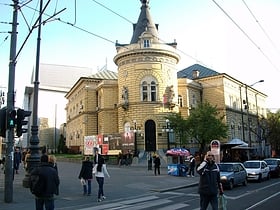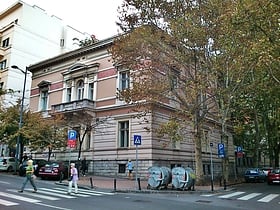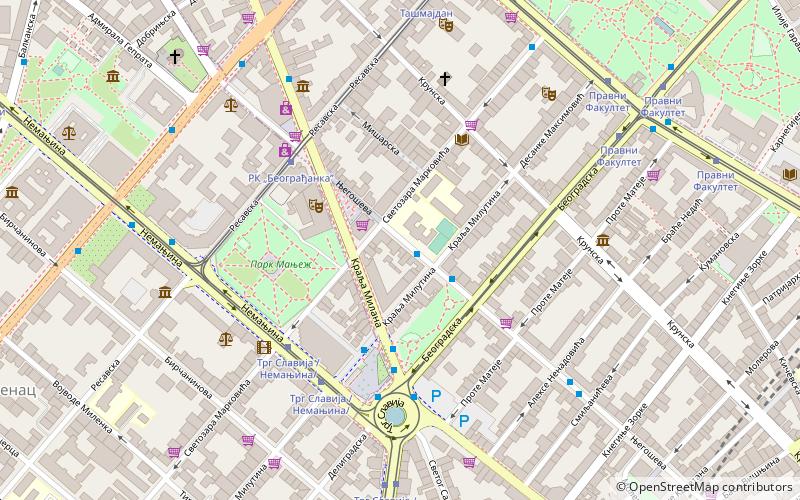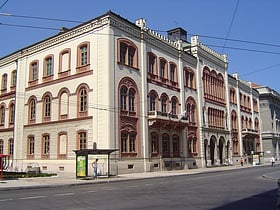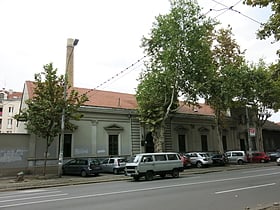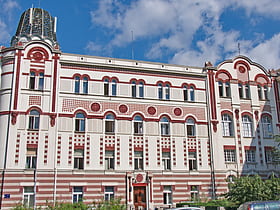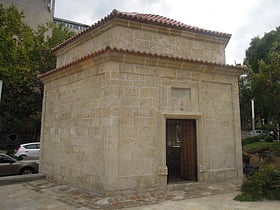Belgrade: Memorial
Places and attractions in the Memorial category
Categories
- Museum
- Memorial
- Park
- Church
- Neighbourhood
- History museum
- Bridge
- Theater
- Natural attraction
- Nature
- Shopping
- Palace
- Historical place
- Tower
- Specialty museum
- Art museum
- Square
- Street
- Concerts and shows
- Universities and schools
- Shopping centre
- Sport
- Sport venue
- Lake
- Forest
- Cemetery
- Football
- Art gallery
- Arenas and stadiums
Pobednik
Iconic monument of the Balkan War Standing proudly atop the Kalemegdan Fortress in the heart of Belgrade, Serbia, the Pobednik (The Victor) monument is a poignant symbol of triumph and freedom. This towering memorial was erected in 1928 to commemorate Serbia's victory over the Ottoman...
Karađorđe Monument
The Karađorđe Monument in Belgrade stands as a proud tribute to the leader of the First Serbian Uprising against the Ottoman Empire, Karađorđe Petrović. Located in the park of the Museum of the Serbian Orthodox Church, this historic statue is a key landmark in...
Avala
Mountain and historic mining area Standing sentinel over the city of Belgrade, the Avala Tower is a prominent symbol and a poignant memorial that pierces the skyline. This telecommunications tower, located on Avala Mountain, was originally built in 1965 but was destroyed during the NATO bombing of...
Monument of Gratitude to France
Nestled in the heart of Belgrade, Serbia, the Monument of Gratitude to France stands as a poignant tribute to the enduring friendship and alliance between Serbia and France. This solemn memorial, located in Kalemegdan Park, serves as a token of appreciation for...
Keys Handover Memorial
The Keys Handover Memorial is a significant monument situated in the city of Belgrade, Serbia, marking a pivotal moment in the nation's history. This commemorative structure is dedicated to the symbolic handover of the city keys from the occupying German forces to the...
Monument to the Unknown Hero
Scenic memorial to World War I soldiers The Monument to the Unknown Hero is a World War I memorial located atop Mount Avala, south-east of Belgrade, Serbia, and designed by the sculptor Ivan Meštrović.
Monument to Vuk Karadžić
Monument to Vuk Karadžić is a monument in Belgrade, Serbia, featuring a sculpture of Vuk Karadžić. The monument is located at the crossroad of Kralja Aleksandra Boulevard and Ruzveltova Street.
Former Army Headquarters Building
The Army Headquarters Building, also known as the Stone Palace and the Baumgarten's Palace, is located in Serbia, in Belgrade at 33 Kneza Miloša street.
Eternal Flame
The Eternal Flame is a memorial in the Park of Friendship in Belgrade, Serbia. It is dedicated to the military and civilian casualties resulting from the NATO bombing of Yugoslavia in 1999 and symbolizes the resistance of the Serbian nation to the attack.
Hammam of Prince Miloš
Hammam of Prince Miloš is the former Turkish bath in Belgrade, the capital of Serbia. Built in 1836-37, it was declared a cultural monument in 1948.
Monument to Vojvoda Vuk
Monument to Vojvoda Vuk is a sculpture in the Park Proleće in Belgrade, Serbia. The sculpture was created by Đorđe Jovanović in 1922 and the monument was erected in 1936. It is dedicated to the most respected figure of the chetnik movement.
Prince Mihailo Monument
Prince Mihailo Monument is a monument of Prince Mihailo. It is located in the main Republic Square in Belgrade, Serbia, and was erected in 1882. It was the first public monument with representation of an equestrian figure of a ruler in Serbia. The monument is by Italian sculptor Enrico Pazzi.
Monument to Dositej Obradović
The monument to Dositej Obradović is located in the Academy Park, Belgrade, Serbia. Obradović was Serbian writer, educator and the reformer from the revolutionary period of the national awakening and rebirth. Also in the park are monuments of the prominent Serbian scientists Josif Pančić and Jovan Cvijić, near Belgrade University.
Doctor's Tower
The Doctor's Tower is a tower in Belgrade, the capital of Serbia that is a historic former doctors residence and then psychiatric clinic. It is located at 103 Kneza Miloša street, in the municipality of Savski venac. The tower was built in 1824 by the Italian doctor Vito Romita, one of the first doctors in Serbia after the uprisings.
Air force command building
Air Force Headquarters is the monumental edifice, situated at 12 Aviatic Square in Zemun, Belgrade, the capital of Serbia. The first medical commission for the pilots started its work in the Command Building in 1945, which was actually the precursor of the Air Force Medical Institute.
Photographic Studio of Milan Jovanović
The photographic studio of Milan Jovanović was constructed in 1903 as the first and so far the only structure built for the purpose of taking and developing photographs.
Đorđe Jovanović House
The Sculptor Đorđe Jovanović's House is at 6 Skerlićeva Street, Belgrade, and has the status of a cultural monument.
Tomb of People's Heroes
Tomb of People's Heroes in Belgrade is located underneath the walls of the Belgrade Fortress. It holds the remains of four recipients of the Order of the People's Hero of SFR Yugoslavia. It was built in 1948.
Čukur Fountain
The Čukur Fountain is a monument built to commemorate the Čukur Fountain incident of 15 June 1862, starting with the death of a boy -- Savo Petković -- and growing into a conflict between Serbia and the Ottoman Empire.
Monument to Josif Pančić
Monument to Josif Pančić was erected in Belgrade in the memory of Јоsif Pančić, a Serbian doctor, scientist, botanist and the first president of Serbian Royal Academy. The monument is located in the Academy Park and has the status of the cultural monument.
Karamata Family House
Karamata family house is the cultural monument. It represents the cultural property of a great importance to Belgrade and is situated in Zemun, at 17 Karamatina Street.
House of Stevan Mokranjac in Belgrade
House of Stevan Mokranjac in Belgrade is significant as the house where the famous composer Stevan Stojanović Mokranjac lived and worked, during his stay in Belgrade. It is located on the corner of 16, Dositej Street and Gospodar Jevremova. The house was built as a family house of Jakov Damjanović, building contractor, in 1872.
House of Vuk's Foundation
The House of Vuk's Foundation is the name of a historical building in Belgrade, built in 1879, that serves as the headquarters of the Vuk's Foundation.
Monument to the Insurgents
Monument to the Liberators of Belgrade in Karađorđe's park is an authentic historical place of the camp of the main insurgent army and of the military cemetery of the liberators of Belgrade under Karađorđe during the Siege of Belgrade in 1806. The monument in the cemetery was erected by Prince Aleksandar Karađorđević in 1848.
Great School Building
Velika Škola Building is located in Belgrade, at 22 Gospodar Jevremova Street, as a building significant for the beginning of the high education in Serbia, as well as for famous historical persons who lived in it, it was declared a cultural monument.
Vozarev Cross
Vozarev Cross is located in Belgrade, in the park between Vojvode Šupljikca Street and Mileševska Street, and it was erected in 1847. It represents the immovable cultural property as the cultural monument.
Officers' Club
The Officers' Club in Belgrade, is situated at 48 Kralja Milana Street and as the memorial of the development of Belgrade at the end of the 19th century it has the status of a cultural monument.
House of Milan Piroćanac
House of Milan Piroćanac is located in Belgrade, at the corner of Francuska and Simina streets, and it has the status of a cultural monument.
Krstić's Brothers House
The Krstic Brothers' House is located in Belgrade, at the King Milutin street no.5, since 1973, with the status of cultural heritage. The house was built in the late 19th century as a representative of a residential buildings.
Captain Miša's Mansion
The Mansion of Miša Anastasijević is one of the most notable buildings in Belgrade, Serbia. It is the University of Belgrade's administration and governance building.
Steam Bath of Brothers Krsmanović
The Steam Bath of Brothers Krsmanović is the former public bath in Belgrade, the capital of Serbia. Built from 1901 to the 1920s around the former Turkish bath from the 18th century, it was the last operational public bath in Belgrade, until it was closed in 2004. In 2001 the edifice was declared a cultural monument.
Old Telephone Exchange
The Old Telephone Exchange is a building located in Belgrade, Serbia, at 47 Kosovska Street. It was built according to the project by Branko Tanazević for the telephone exchange and is the first such building in Serbia. It was completed in 1908. The third floor was added later, after the First World War.
Map

